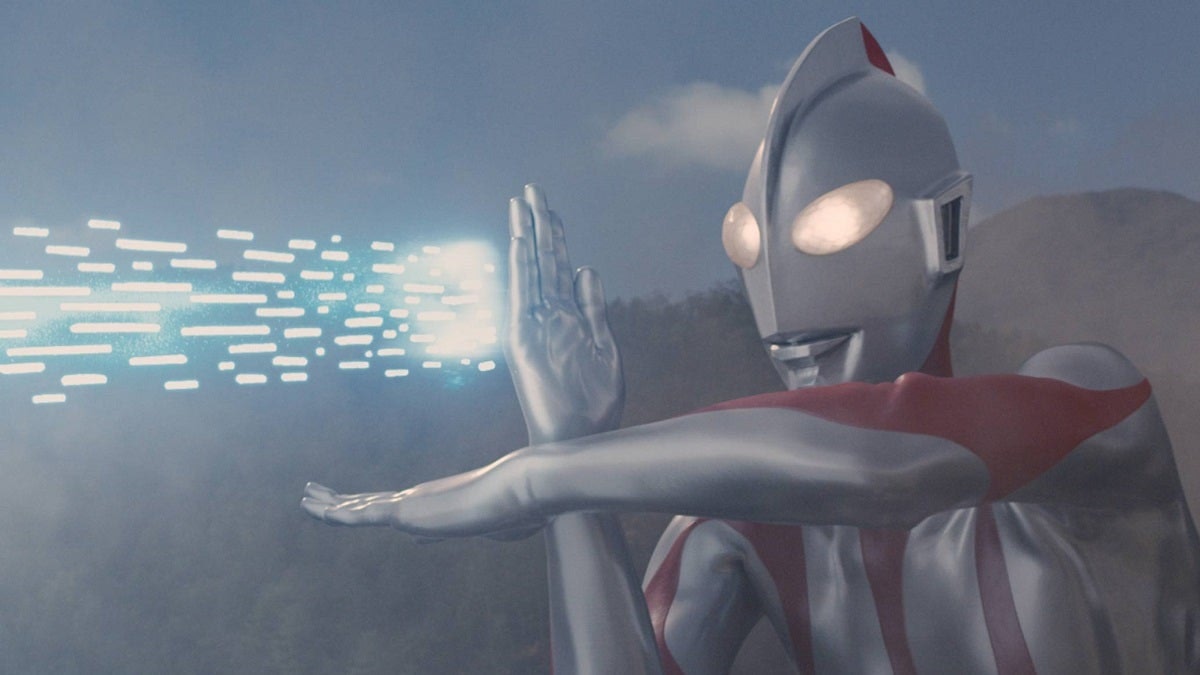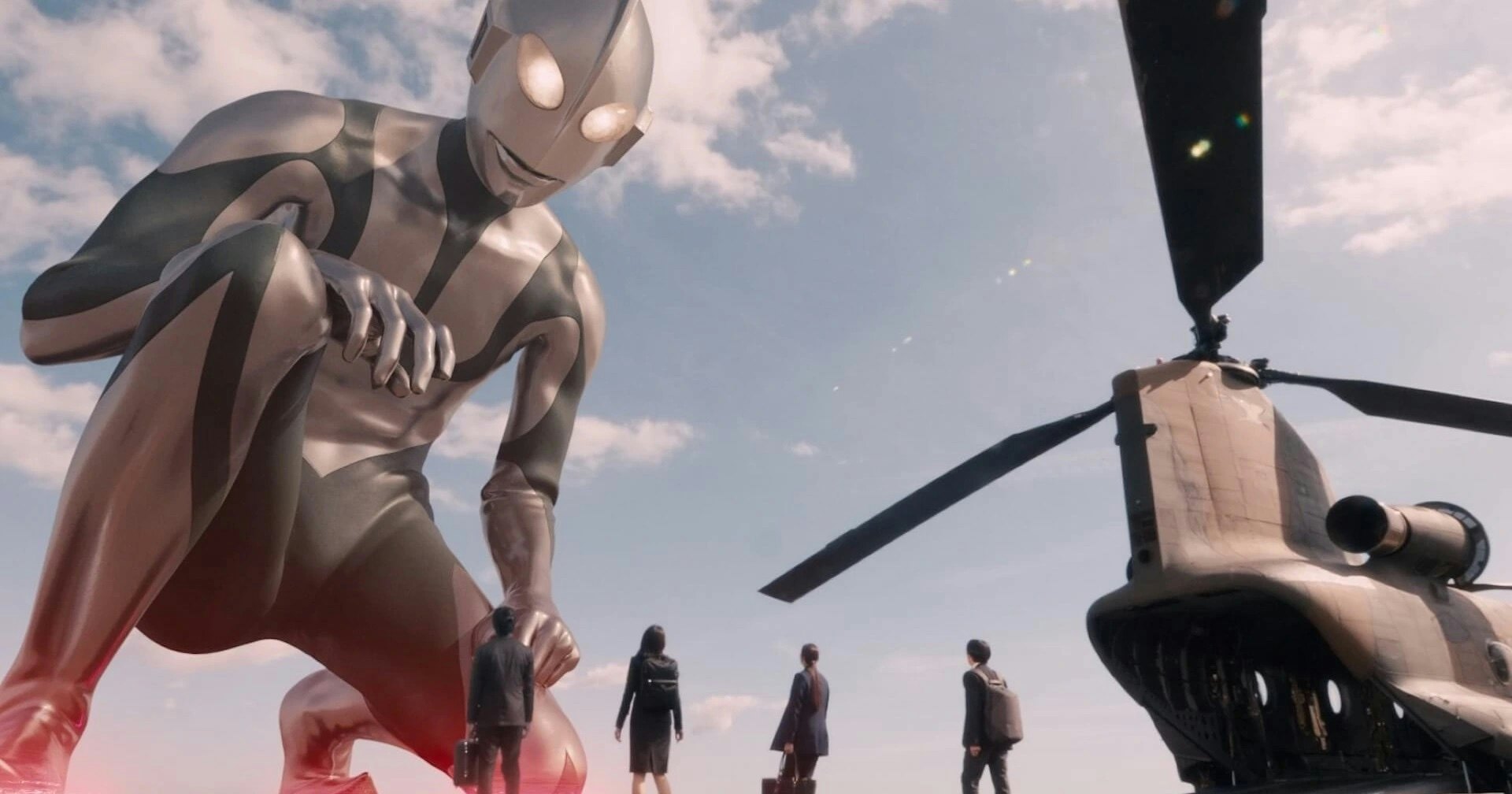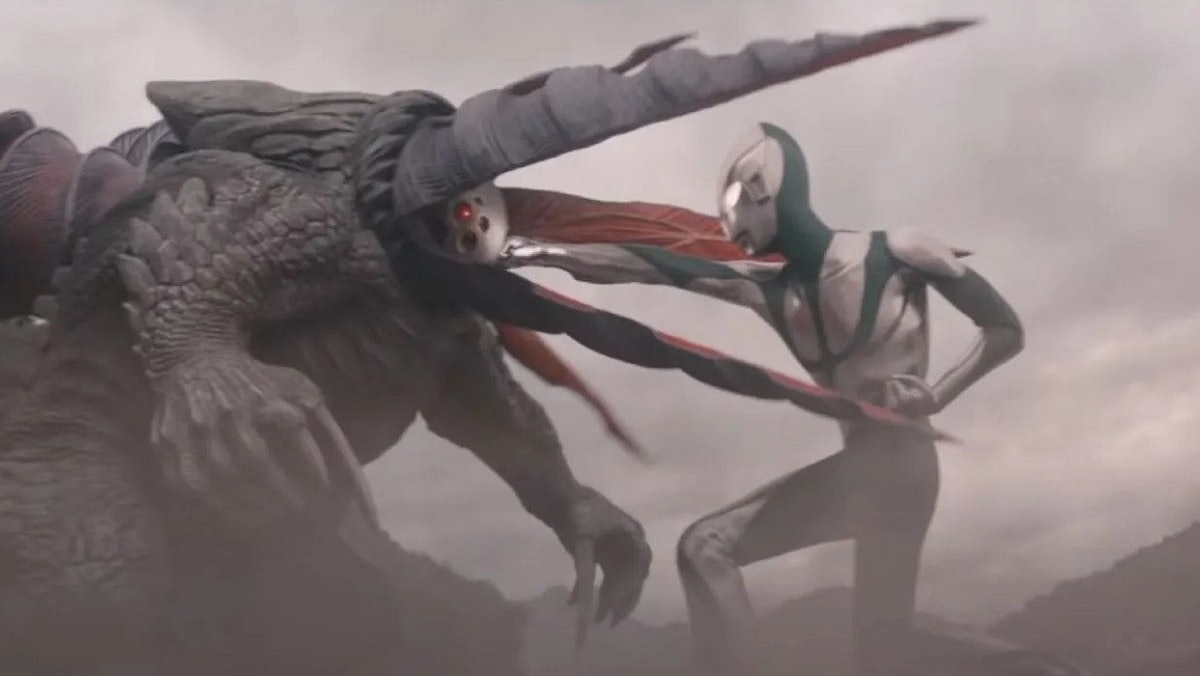
At first, it was hard to take Shin Godzilla seriously when the creature that emerged from the radioactive slime looked more like a Looney Tunes lizard that had been squeezed so hard its eyes bulged out. But then Hideaki Anno and Shinji Higuchi’s 2016 movie evolved into a scathing criticism of the Japanese government and the perils of red tape, all while delivering one of the best Godzilla movies in decades. Now the duo is back to continue the series with Shin Ultraman.
Set in the same universe as Shin Godzilla, Shin Ultraman picks up several years later, after an indiscriminate number of kaiju, giant monstrous lifeforms that seem to exclusively attack Japan, have invaded. In response, the Japanese government established the S-Class Species Suppression Protocol (SSSP) to deal with kaiju threats. On their latest mission to contain an energy-zapping kaiju attacking a remote countryside power plant, the team is suddenly interrupted by a giant alien that emerges from the sky. Awestruck, they watch the silver giant battle the kaiju, annihilating it with a powerful beam shot from its hands before disappearing. They dub him Ultraman.
Unknown to them, SSSP member Shinji Kaminaga (Takumi Saitoh), who’d been evacuating a child in the forest, was killed by Ultraman’s landing. Ultraman, fascinated by Shinji’s display of self-sacrifice, fuses bodies with him and takes on Shinji’s human form when not fighting. As Shinji forms a close bond with his SSSP partner, the perceptive Hiroko Asami (played with hilarious spunk by Masami Nagasawa), Japan must navigate new world-ending threats that emerge daily following Ultraman’s arrival.
Higuchi takes over directing duties for Shin Ultraman, with Neon Genesis Evangelion creator Anno penning the script. And it may be Higuchi being unleashed as sole director, or it may be Anno also acting as the co-editor, but the best way to describe Shin Ultraman is visually insane.

Like Shin Godzilla, the majority of the scenes take place in board rooms and offices (the plight of the bureaucratic nerd continues to be the focus of the Shin movies), but all these scenes seem to have been shot and edited by someone who inhaled a bunch of glue while exclusively watching Satoshi Kon films. Every shot is at a different crazy angle or in a bizarre close-up, while speaking characters are framed under someone’s arm, through an armchair, at an extremely low angle, at an even more extreme high angle, straight on, or only from the back of their head or feet.
No shot is ever repeated. One conversation between two characters in a blank room switched the angle and framing with every cut, the editing as rapid-fire as the dialogue. The frantic framing kicks up a visual frenzy, as if to say, “This is intense, this is chaotic, this is the beginning of the end of the world.”
Shin Ultraman switches genres just as casually, skipping between boardroom banter and corporate comedy towards a moodier paranoid thriller full of thinly veiled threats and backroom deals. Then there are the fight scenes, which are given more airtime than in Shin Godzilla, and play out with all the wonky CGI that Toho can afford. But there’s a certain charm to the model-like giant creatures that move with the choppiness of a Ray Harryhausen monster, and there’s certainly more distinctiveness to them than what you’d find in the weightless third act of a Marvel movie.

The only problem is that, for all the style Shin Ultraman has, it lacks the soul and satirical spirit of its predecessor. The film attempts to make the relationship between Shinji and Hiroko Asami an emotional anchor, with stars Saitoh and Nagasawa dutifully playing out the Lois and Clark-inspired beats of the characters. But this superman is a little too alien, and their relationship ends up coming off cold.
The SSSP members are the best bet we have for likable characters, led by Drive My Car star Hidetoshi Nishijima as the stoic section chief Kimio Tamura. Akihisa Taki (Daiki Arioka) is the geeky genius, and Akari Hayami is the perpetually frazzled optimist, but their personalities are slightly buried under the movie’s frantic style. And the “nerds will prevail!” triumph of Shin Godzilla doesn’t have the same punch in Shin Ultraman, which is busier juggling too many subplots and Easter eggs.
But despite its failings, Shin Ultraman is a lot of fun. Its frantic style might be a little exhausting, its emotional beats might be a little hollow, but by God, is it bold. And any movie that lets Hideaki Anno dream of giant men (and women), and the havoc they wreak, is one that deserves to be seen on the big screen.
Shin Ultraman plays in U.S. theaters on January 11 and 12.







